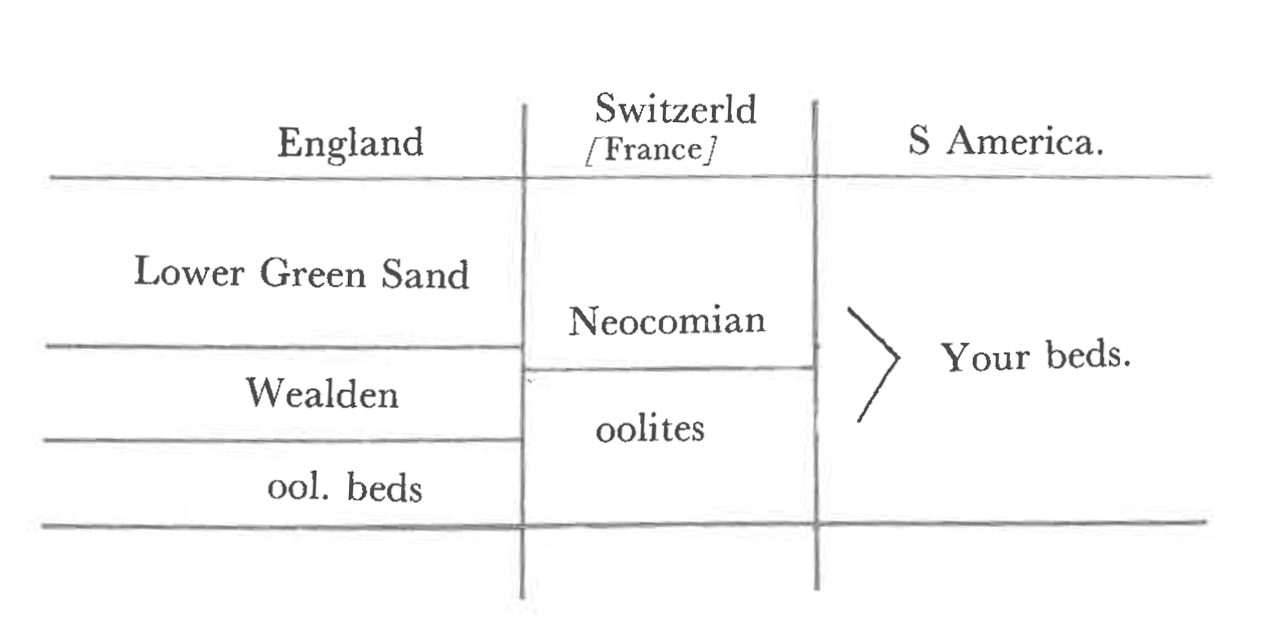From Edward Forbes [after 14 February 1845]1
Thursday
Dear Darwin—
Any letters directed to the Survey—at 6 Craigs Court Charing X—will always find me—2
Gryphaea orientalis3 is from the Southern India* beds & is Cretaceous— Probably upper GreenSand.
* Verdachellum4 not Pondicherry in this case.
I shall look out for the Copiapo Avicula which had escaped me.5
D’Orbigny & Von Buch no doubt mean the same thing.6 Exogyra or Gryphæa couloni is a characteristic Neocomian fossil. Von Buch’s conclusion of the beds forming a passage from the oolites to the Chalk is exactly what I believe to be true. Von Buch wrote before the “Neocomian” was investigated.7
The relative positions would be as follows:

D’Orbigny probably looks on the Amer beds to be purely “Neocomian” since he holds the doctrine of definite divisions or formations everywhere.
Ever, most sincerely | Edward Forbes
Footnotes
Bibliography
Buch, Leopold de. 1836. Description physique des iles Canaries, suivie d’une indication des principaux volcans du globe. Translated by C. Boulanger. Paris: F. G. Levrault.
EB: The Encyclopædia Britannica. A dictionary of arts, sciences, literature and general information. 11th edition. 29 vols. Cambridge: Cambridge University Press. 1910–11.
Geikie, Archibald. 1861. On a rise of the coast of the Firth of Forth within the historical period. Edinburgh New Philosophical Journal n.s. 14: 102–12.
South America: Geological observations on South America. Being the third part of the geology of the voyage of the Beagle, under the command of Capt. FitzRoy RN, during the years 1832 to 1836. By Charles Darwin. London: Smith, Elder & Co. 1846.
Summary
Sends information on Gryphaea orientalis. [See South America, p. 212.]
Letter details
- Letter no.
- DCP-LETT-809
- From
- Edward Forbes
- To
- Charles Robert Darwin
- Sent from
- unstated
- Source of text
- DAR 43.1: 47–8
- Physical description
- ALS 3pp
Please cite as
Darwin Correspondence Project, “Letter no. 809,” accessed on 19 April 2024, https://www.darwinproject.ac.uk/letter/?docId=letters/DCP-LETT-809.xml
Also published in The Correspondence of Charles Darwin, vol. 3


